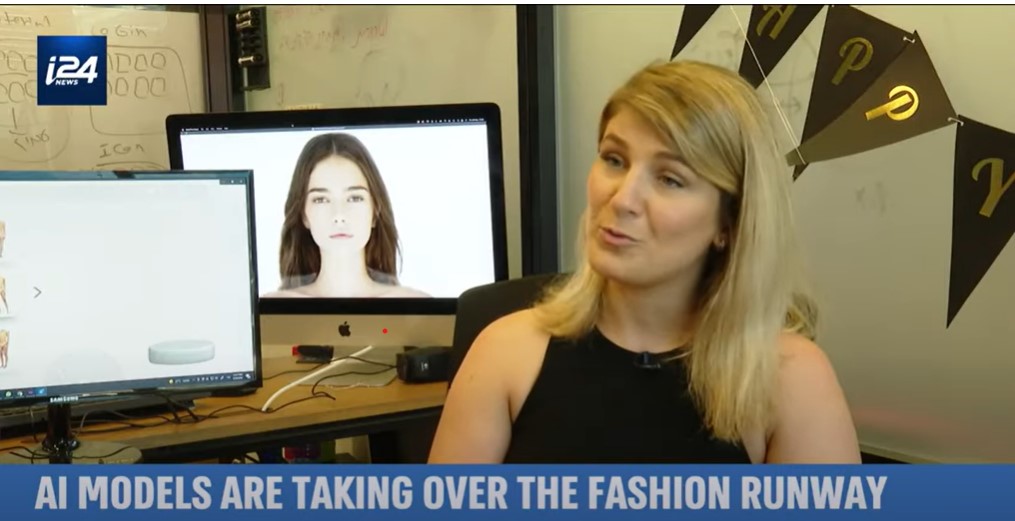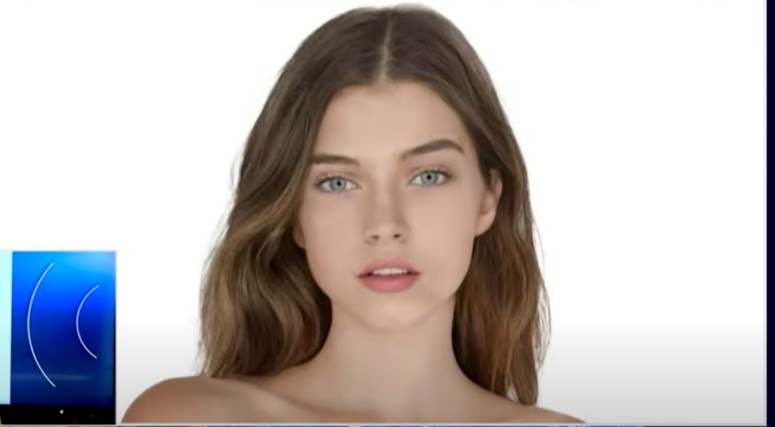Models present a picture of perfection—or at least as close as human beings can get to perfection. But what if technology allowed you to create a model that satisfied all the details of the perfection you’re seeking and bypassed humans altogether? This is what China’s fashion industry is reaching for.
Artificial intelligence-generated models have taken China’s fashion industry by storm in recent months. The ideal is doe-eyed, slim and big-breasted. AI bots are rapidly replacing human models in magazines, store catalogs, and online advertising campaigns. And while China is at the forefront of this development, it’s not alone.
The trend, surely a preview of what is bound to flourish everywhere else, is already generating controversy. Almost without exception, the AI models conform to a certain — highly sexualized — ideal of female beauty: one that prizes tiny waists, wide hips, and visible cleavage. This radical departure from traditional images of Chinese women is proving to be very disturbing. Many worry that AI fashion will reinforce toxic, unrealistic beauty standards.

AI models are not unique to China, and the concept isn’t brand-new either. Levi’s recently launched a campaign featuring AI-generated images, while an AI model featured on the cover of Vogue’s Singapore edition in March. But the technology has caught on far quicker in China than in most other countries.
Chinese tech giant Alibaba rolled out a free digital fashion model generator on its e-commerce platforms as early as 2020. The tool — named Taji — allows vendors to select from 100 virtual models of varying ages and ethnicities. Then, they can upload their product photos, and Taji will generate a series of images of the model wearing the clothes in the photos. As of the end of 2022, more than 29,000 vendors had used Taji to produce over 1.6 million AI-generated images, according to an Alibaba report. That’s a lot of human models who have lost their jobs.
The flare up of interest can be attributed to the launch of ChatGPT this past November and has spread to photography as well.
Why such interest?
One reason is that bot models are much cheaper than human models. A human model can cost as much as $1,000 an hour while Taji, by contrast, is free.
Other powerful incentives are that AI models don’t get tired, have no schedule conflicts, and are not affected by the weather. What’s more, the models can be customized to cater to the beauty ideals of the targeted audience.
On the downside, these AI models often look eerily similar, but some would say the same of the clone-like aspect of human models. Overwhelmingly, they are either white women with blue eyes, blond hair, and long legs or Asian models with wide eyes, big boobs, and a slender figure. Clearly an expression of a biased—and stereotypical–cultural ideal.
It is not by chance that the AI images reflect the prurient desires of the “male gaze.” Jeff Ding, an assistant professor at the George Washington University whose research focuses on China’s AI industry, states, “Since existing gender biases permeate procedures, algorithms, and design, artificial intelligence technology can replicate and reproduce gender inequality.”

Gender experts are concerned about the social harm the “doll-likeness” AI models may cause. China is already seeing a spike in cases of eating disorders among girls and young women, which is being fueled by extreme “beauty challenges” popularized on social media. But this can hardly be blamed on AI-generated images since as is well known, the West has been struggling with the same problem for decades. However, “doll-likeness” images set even more unrealistic beauty standards, which will trigger more body shame and anxiety among young women.
Backlash against this attempt to perfect the female image through artificial intelligence is already starting to happen. A recent viral post about AI models on the microblogging platform Weibo sparked amazement among many users, as they denounce the sexism inherent in many AI models.
“I was immediately disgusted by the images (in the viral Weibo post),” said Zheng Le, a 30-year-old from east China’s Jiangxi province. “Their looks and body shapes are so unrealistic and sexual.”
“From my perspective, it’s not a good advertisement for the lingerie line — the images of the AI models looked like pictures of porn stars,” said Irene Pan, a 25-year-old who lives in the eastern city of Hangzhou.
Lin, a fashion model from east China’s Zhejiang province says, “More women are speaking up against the male gaze problem, maybe in the future, more women will contribute to AI-generated content and train machine learning models from a feminist perspective.”












